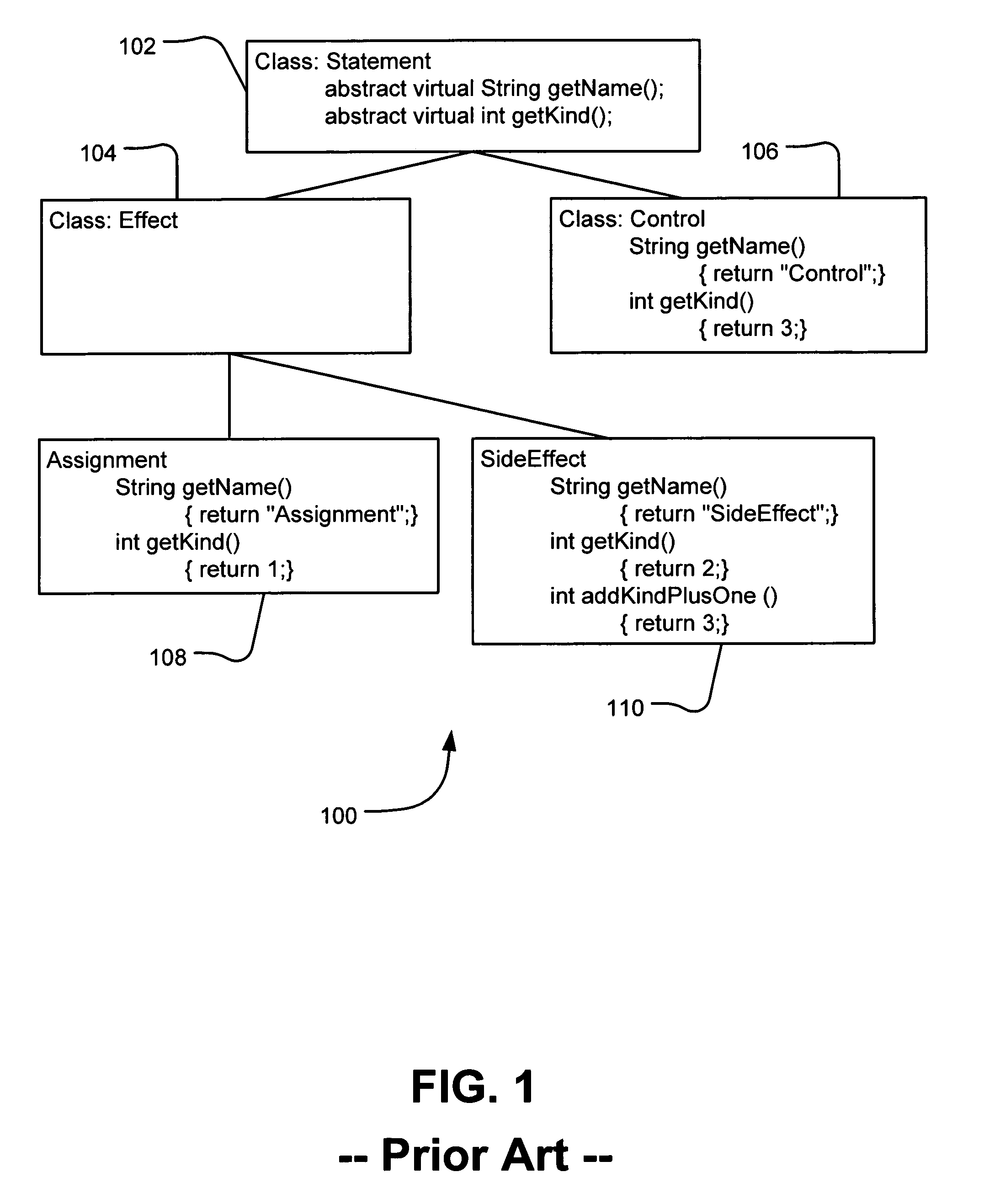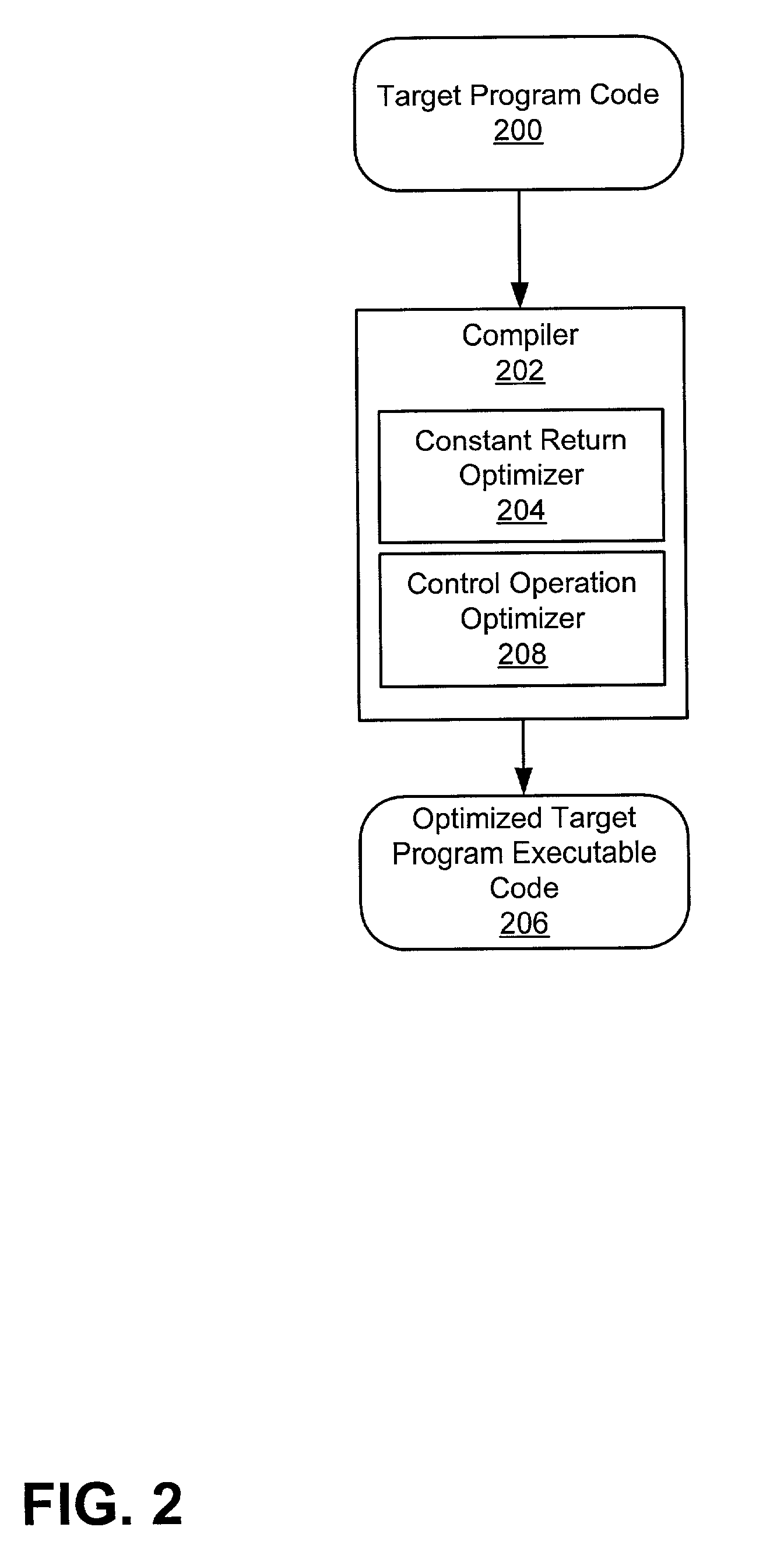Constant return optimization transforming indirect calls to data fetches
a technology of indirect data fetch and constant return optimization, applied in the field of program code optimization, to achieve the effect of no side effects
- Summary
- Abstract
- Description
- Claims
- Application Information
AI Technical Summary
Benefits of technology
Problems solved by technology
Method used
Image
Examples
code example 2
An Indirect Call Site with Control Dependent Type Tests
[0054]In Code Example 2, the control operation switch( ) in line (3) includes a control variable kind as an input parameter and is associated with control targets case 1, case 2, case 3, and default with associated instructions in lines (4)–(7).
[0055]The indirect call to stmt.getKind( ) returns an integer constant, which is then used by an appropriate control target instruction to downcast stmt to an appropriate subtype before executing functions specific to the subtype. In an embodiment of the present invention, the downcast instruction includes two components: (1) a compile time check to make sure the downcast type can be applied to the declared type of stmt; and (2) a dynamic runtime check that throws an exception if the runtime type of the stmt object is incompatible with the downcast operation.
[0056]While the constant return optimizations discussed above may be used to remove the overhead of the indirect method invocation, ...
code example 3
Control Dependent Type Tests without Constant Return Optimization
[0060]In Code Example 3, the control operation in line 23 includes a control variable argCount. The call to stmt.getArgCount( ) on line 22 is not optimized using constant return optimization because the target method on line 18 is not constant returning. However, a control operation optimizer can identify that control variable argCount cannot equal a value other than ‘0’. Therefore, the compiler can deduce a compile time that the indirect invocation on line 24, which represents a control target, can be resolved to the direct invocation of the method Control.getName( ).
[0061]FIG. 7 illustrates operations for optimizing a control statement in an embodiment of the present invention. An identification operation 701 identifies the relationships between various target methods and their return constants, such as that described with respect to constant return optimization. Another identification operation 700 identifies a cont...
PUM
 Login to View More
Login to View More Abstract
Description
Claims
Application Information
 Login to View More
Login to View More - R&D
- Intellectual Property
- Life Sciences
- Materials
- Tech Scout
- Unparalleled Data Quality
- Higher Quality Content
- 60% Fewer Hallucinations
Browse by: Latest US Patents, China's latest patents, Technical Efficacy Thesaurus, Application Domain, Technology Topic, Popular Technical Reports.
© 2025 PatSnap. All rights reserved.Legal|Privacy policy|Modern Slavery Act Transparency Statement|Sitemap|About US| Contact US: help@patsnap.com



